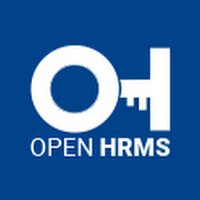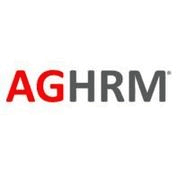Yes, most leave management solutions are cloud-based, so they can be accessible from a variety of devices and platforms, including desktop, laptop, tablet, and mobile devices. Employees may easily request and manage their leaves from anywhere with an internet connection. The system is usually interoperable with several operating systems and browsers, making it accessible to a wide range of users.
List of 20 Best Leave Management System
LeavesOnBot+ is a HR solution for managing leaves. With its advanced features like automated tracking, real-time notifications, and seamless integration with existing systems, LeavesOnBot+ streamlines all leave management tasks, ensuring precision an...Read More LeavesOnBot+
MakeMySalary - the perfect payroll solution for your business. Our professional team guarantees precise and punctual payroll processing, with complete customization to fulfill your unique requirements. Let go of the burden of leave and attendance man...Read More MakeMySalary
A WorkForce Suite - an advanced, cloud-based and mobile-friendly workforce management solution perfect for multinational corporations. With seamless employee communication and collaboration capabilities, this innovative software is designed to enhanc...Read More WorkForce Suite
ZebiHR is a HR management software that streamlines attendance, salary, and payroll processes for your employees. With its advanced facial recognition attendance system, manual data entry becomes a thing of the past. Simplify your HR tasks and enhanc...Read More ZebiHR
EmployeeVibes HRMS is a online solution for streamlining your HR tasks. From onboarding and attendance tracking to payroll management and performance evaluation, this user-friendly system automates all your HR processes. Its customizable policy imple...Read More EmployeeVibes HRMS
ConfluxHR is a HRMS software that streamlines and optimizes all HR operations for businesses. Our comprehensive solution boasts an array of features, including employee information management, payroll processing, and attendance tracking. With advance...Read More Confluxhr
Desklog is productivity software that enables real-time monitoring of employee activity for enhanced efficiency. Its main capabilities include tracking productive time, monitoring app and URL usage, and seamless integration with project management to...Read More Desklog
TeamLease - a game-changing mobile application that simplifies attendance management and automates workforce input. Our online onboarding tool enables employees to easily request and receive leave approvals, while managers effortlessly share attendan...Read More TeamLease
Wingubox is a payroll management software for businesses in Kenya. Our cloud-based solution simplifies the tedious task of payroll processing through features such as mass payslip emailing, employee self-service, and multi-currency support. With Wing...Read More Wingubox
Trackabi, a online platform that simplifies time tracking and leave management. Its intuitive interface, extensive reports, and personalized scheduling for employee absences optimize the monitoring of work hours. With robust features such as project...Read More Trackabi
Bindle solution for managing time off requests with ease and efficiency. Designed for small businesses in the US, UK, Australia, and New Zealand, Bindle simplifies the process of requesting and approving time off for over 2200 employees. Centralize a...Read More Bindle
CrewTraka is a job management tool for tradespeople. Developed in Australia, this innovative app streamlines tasks with scheduling, timesheets, custom forms, and group messaging features – all in one convenient platform. Available on both iOS...Read More CrewTraka
Open HRMS is tool that encourages employees to participate and contribute at all levels. It offers valuable insights into performance and makes attendance tracking a breeze. The software is equipped with advanced recruitment features that make findin...Read More Open HRMS
Starlink, the premier Indian company that specializes in crafting state-of-the-art Biometric Attendance Systems and Access Control Systems. Our skilled team constantly integrates cutting-edge technologies into our products, offering unparalleled solu...Read More Starlink
Cloud HR Console is a cloud-based solution for HR, Employee, and Payroll Management in India. This innovative software is designed to streamline your payroll processes while eliminating the need for paper-based documentation. With advanced automation...Read More Cloud HR Console
Rollcall solution for HR, payroll, and on-field automation. Simplify attendance management and effortlessly integrate attendance and payroll for your sales, marketing, distribution, and service teams across multiple branches. Say farewell to manual t...Read More Rollcall
PraxisTime stands out as a leader in the field with its cutting-edge software, effectively elevating productivity and streamlining operations. With innovative features and tools, it transforms time and resource management for businesses, leading to i...Read More PraxisTime
PayrollPanda is a tool for streamlining your payroll processes. With its cutting-edge features, effortlessly generate monthly payroll, payslips, reports, and forms. Its seamless bank integration guarantees the effortless transfer of employee payments...Read More PayrollPanda
Intellipayroll is a payroll software that streamlines salary processing for employees. The user-friendly system allows for quick generation of important documents like PF ECR challan, ESIC monthly returns, Form 16, and various reports with just one c...Read More Intellipayroll
AGHRMS, a leading cloud-based payroll and HR software developed in Singapore. Trusted by over 880 companies in 12 countries, our platform offers a complete solution for effortless HR management. With features such as automated payroll, attendance tra...Read More AGHRMS
Learn More About Leave Management System
- What Is Leave Management System?
- What Are The Recent Trends In Leave Management System?
- Benefits Of Using Leave Management System
- Important Factors To Consider While Purchasing Leave Management System?
- What Are The Key Features To Look For In Leave Management System?
- Why Do Businesses Need Leave Management System?
- How Much Time Is Required To Implement Leave Management System?
- What Is The Level Of Customization Available In Leave Management System?
- Which Industries Can Benefit The Most From Leave Management System?
- Conclusion
What Is Leave Management System?
A Leave Management System is a digital solution that simplifies and automates the process of handling employee leave, time off requests, and attendance tracking. This system enables managers to properly monitor and approve/deny leave requests, while employees may conveniently submit and check their leave status. Companies that use a Leave Management System can say goodbye to time-consuming paperwork, spreadsheets, and manual leave monitoring.
This system centralizes all leave-related information, making it readily available to both managers and employees. One of the most important elements of a Leave Management System is its capacity to handle many sorts of leaves, such as sick leave, vacation leave, maternity/paternity leave, and others. This guarantees that all leaves are accurately classified and managed in accordance with business policy.
This system also integrates with payroll and attendance systems, which adds ease. This provides for easy and accurate tracking of leaves, ensuring that employees are properly reimbursed. A Leave Management System provides managers with a comprehensive view of their teams' leave schedules and patterns, making it easy to plan and allocate workload properly. It also prevents the possibility of overlapping leaves and assures adequate coverage for critical jobs.
Furthermore, a Leave Management System helps employees comply with labor laws and regulations by keeping track of all leaves taken. This information is easily accessible and useful for audits and other compliance-related operations. Overall, a Leave Management System increases the efficiency, transparency, and fairness of handling employee leave. It saves time and resources for both managers and employees, making it an indispensable tool for any firm wishing to improve its leave management procedure.
What Are The Recent Trends In Leave Management System?
In recent years, traditional techniques of managing employee leave have become obsolete and unproductive. This has led to an increase in the use of leave management systems, which are software solutions that simplify and automate the process of requesting, approving, and recording employee leaves. As the demand for effective and convenient leave management solutions grows, the industry evolves and adopts new trends.
One of the most significant changes in leave management systems is the transition to cloud-based solutions. With the advent of remote and flexible work arrangements, more and more businesses are turning to web-based leave management solutions that can be accessed from any device with an internet connection. This enables employees to request and track leaves from anywhere, while managers can approve or reject them in real time.
Furthermore, cloud-based solutions include improved security features and automatic backups, ensuring the safety of important employee data. Another rising trend in leave management systems is the incorporation of artificial intelligence (AI) and machine learning (ML) technology. These intelligent solutions can assess previous leave trends and forecast future ones, making it easier for managers to plan and manage staff absences.
They can also automatically allocate jobs and redistribute workloads to compensate for missing personnel, lowering the impact of absences on total productivity. Aside from AI and ML, leave management systems are combining social media-style features like employee profiles and news feeds. These features enable employees to check and manage their leave balance, request leaves, and view the leave requests of their colleagues.
This encourages transparency and helps to avoid conflicting leave schedules, resulting in a smoother and more collaborative work environment. Finally, there is a growing desire for personalized leave management systems that can meet the specific needs of each firm. This provides features like multi-level approvals, leave accrual rules, and customizable leave policies. These customisable choices offer a more specialized solution for various industries and organizational cultures, making leave management systems more flexible and adaptive.
Benefits Of Using Leave Management System
A dependable leave management system may be a game changer for any firm, large or small. The days of manually tracking employee leave, organizing paperwork, and doing tiresome computations are over. Investing in a leave management system can provide numerous benefits that can improve your company's productivity, employee satisfaction, and overall success.
Let's get into the main advantages of employing a leave management system:
1. Streamlines The Leave Request Process: A leave management system allows employees to conveniently submit leave requests online, reducing the need for physical paperwork and time-consuming approvals. The system enables managers to swiftly analyze, approve, or reject requests, simplifying the overall process. This improves efficiency and production for both employees and managers.
2. Accurate Leave Tracking: Leave management systems enable accurate and real-time leave tracking. It reduces the possibility of errors, such as overpayment or underpayment of leaves, protecting your firm from significant legal or financial ramifications. The technology also keeps track of employees' leave histories, making it easier to identify patterns and trends.
3. Ensures Compliance With Company Policies: A leave management system enables businesses to create customized leave policies that are aligned with their business objectives and requirements. This ensures that all employees follow the company's policies while minimizing disagreements caused by manual tracking and approval processes.
4. Increases Employee Satisfaction: By automating the leave request process, employees have a clear understanding of their leave balance and history. It also allows them to view and schedule their leaves properly, which leads to higher employee satisfaction. Employees can also check their colleagues' leave schedules, which helps them plan and manage their duties more effectively.
5. Improves Transparency And Accountability: Leave management systems give managers a consolidated picture of all leave-related actions, making it easier to monitor and track leaves. This improves transparency and accountability among employees, ensuring that leaves are taken ethically and properly.
6. Improves Resource Management: A leave management system provides a comprehensive view of employee leave schedules, allowing managers to better plan resource allocation and avoid work disruptions. It also aids in detecting peak departure periods, enabling managers to plan ahead and provide adequate coverage.
Important Factors To Consider While Purchasing Leave Management System?
When it comes to purchasing a Leave Management System, there are a few key elements to consider before making a purchase.
This tutorial will walk you through the main things to consider before making a purchase.
1. Evaluate Your Needs: The first step in the purchasing process is to determine your organization's unique requirements. Determine the number of employees, their leave entitlements, and the complexity of your leave policy. This will aid in determining which features and functionalities are critical to your organization.
2. Usability: A user-friendly interface is essential for a seamless and efficient leave management procedure. Look for a system that is simple to use, with a clean and intuitive layout. It should also have adjustable choices so that you may tailor the system to your company's specific requirements.
3. Integration Capability: The leave management solution should work easily with your current HR and payroll applications. This eliminates the need for human data entry and minimizes the possibility of errors. It will also streamline the experience for both HR and employees.
4. Mobile Access: In today's fast-paced environment, it is critical to have a leave management system that can be accessed on the go. Make sure the system includes a mobile app or a responsive website that allows employees to conveniently request and manage their leave.
5. Compliance And Security: When handling employee departs, it is critical to adhere to labor rules and ensure data security. Ensure that the system complies with local standards and has stringent security measures in place to secure sensitive employee data.
6. Reporting And Analytics: An effective leave management system should include powerful reporting and analytics capabilities. This allows you to track employee leave trends, identify issue areas, and make data-driven decisions for your firm.
7. Customization Options: Choose a solution that allows you to tailor procedures, leave types, and approval processes. This can assist cater to specific business needs and provide a more personalized leave management experience.
8. Customer Support: After-sales support is critical to the smooth operation of any software. Make sure the vendor provides dependable customer service and training to help you get the most out of the system.
When choosing a leave management system for your firm, examine the considerations listed above to make an informed decision. Remember to properly investigate and compare several choices before making a final decision. A well-designed leave management system will simplify your HR processes while also increasing employee happiness and productivity.
What Are The Key Features To Look For In Leave Management System?
A Leave Management System is a critical tool for any firm seeking to successfully manage their employees' leaves. As a buyer, you must understand the important characteristics to look for in a Leave Management System to guarantee you are making the best purchase for your company's needs.
Here are the main characteristics to consider while looking for a leave management system:
1. Customizable Leave Policies: The Leave Management System should enable you to develop and customize leave policies based on your company's rules and regulations. This functionality ensures that the system is suited to your company's exact needs.
2. Simple Leave Requests And Approvals: The system should feature an intuitive interface that allows employees to request leaves and supervisors to approve or reject them. This capability should also include notifications and reminders for both parties.
3. Comprehensive Calendar View: A calendar view is required to provide a quick and easy overview of each employee's approved or pending leave. It should also feature a team view that displays team members' leaves for easier planning.
4. Time-Off Tracking: The system should be able to track several sorts of leaves, such as vacation, sick, and personal leaves, as well as their respective balances. This feature allows for accurate time off tracking and prevents overlapping leaves.
5. Payroll Integration: Integrating the Leave Management System with your payroll system ensures correct time and attendance tracking for employees' wages.
6. Reporting And Analytics: The system should generate complete reports on employees' leaves, including the number of leaves taken, the duration of those leaves, and the most popular leave kinds. This information can assist uncover trends and patterns in leave requests.
7. Employee Self-Service Portal: An employee self-service portal enables employees to manage their leaves, check balances, see leave history, and access other essential information, minimizing the workload of HR personnel.
8. Mobile Accessibility: Given the extensive usage of smartphones, it is critical to have a Leave Management System that is mobile friendly. It allows employees to request leaves on the fly and managers to approve them quickly.
9. Multi-Level Approval System: A multi-level approval system enables effective delegation of leave approval authority to multiple managers based on the employee's level or department.
10. Security And Data Privacy: Finally, the Leave Management System should have strong security measures to protect employee data and maintain data privacy. It should also comply with applicable data protection regulations.
Why Do Businesses Need Leave Management System?
Businesses require a Leave Management System to efficiently handle their employees' leave and time off requests. This technology streamlines the entire process, from leave requests and approvals to tracking and managing staff absences. It provides a consolidated platform for managers and HR workers to manage leave-related responsibilities, resulting in a more efficient and structured workflow.
One of the primary reasons firms should engage in a Leave Management System is to keep accurate and up-to-date records of employee leave. This reduces the need for human recordkeeping, which is error-prone and time-consuming. A Leave Management System allows firms to conveniently track and document employee leaves such as sick days, vacation time, and personal days.
Another key advantage of a Leave Management System is that it automates the leave request and approval procedures. Employees can request time off through the system, and managers can examine and accept or reject them with a few clicks. This not only saves time, but also decreases the possibility of miscommunication or misunderstandings, so boosting the overall efficiency of the leave management process.
Furthermore, a Leave Management System can create detailed information on employee absences, allowing firms to examine leave trends and patterns. This data can be used to estimate future staffing requirements and plan accordingly, ensuring that corporate operations are not affected by employee absences. A Leave Management System also assures compliance with labor laws and regulations.
It keeps track of the amount of leave days that employee is entitled to under their employment contract and company policy, and ensures that these rules are fulfilled. This helps firms avoid legal concerns while also maintaining a fair and consistent leave policy for all employees.
How Much Time Is Required To Implement Leave Management System?
The time required to develop a Leave Management System (LMS) varies depending on a number of factors, including the organization's size, existing systems, and the level of customization necessary. Implementing an LMS can take anywhere from a few weeks to a few months. The first step in installing an LMS is to undertake a needs analysis to identify the organization's particular requirements.
This stage can take up to a few weeks because it requires information from several agencies and stakeholders. Once the needs analysis is completed, the next step is to select the LMS that best meets the organization's requirements. This could take anywhere from a few days to a week, depending on how many demos or trials are undertaken. After the LMS is finalized, the implementation phase begins.
This comprises establishing the system, adapting it to meet the organization's policies, and integrating it with other current systems. This process can take anything from a few weeks to a few months to complete, depending on the level of integration and customisation required. During the implementation process, all employees who will use the LMS should receive comprehensive training.
This can take anywhere from a few days to a week, depending on how many people are available for training. The final step is to test the LMS and confirm that it is working properly. This could take a few days or a week. Once all testing is completed, the LMS is ready to be implemented throughout the enterprise. Finally, implementing an LMS can take anywhere from a few weeks to a few months. It is critical to allow enough time for each phase to guarantee a smooth and successful deployment.
What Is The Level Of Customization Available In Leave Management System?
Leave management systems provide varying levels of flexibility, ranging from basic to extensive choices, to meet the unique demands of each organization. These systems include a number of capabilities, such as recording leave requests, managing employee schedules, and creating reports. Users can configure key parts of the system, such as leave policies and kinds, custom leave categories, and leave approval workflows.
This level of customization is appropriate for small and medium-sized enterprises with standard leave policies and fewer employees. Moving up to a more advanced level, leave management systems provide greater customisation choices. Users can select from a variety of established templates or design their own unique templates for leave applications, approvals, and alerts.
They can also customize the system to reflect their organization's unique leave rules and hierarchy. Advanced customization features include assigning different leave entitlements to different employee groups, establishing sophisticated leave accrual procedures, and integrating with other HR systems. Some leave management systems provide customisation through their user interface, letting users to tailor the dashboard and reports to their tastes.
This customization can help to expedite and simplify the leave management process. Overall, the level of customisation provided in a leave management system can differ from one provider to another. To effectively meet their needs, purchasers must thoroughly examine their organization's specific requirements and select a system that provides the desired level of customization.
Which Industries Can Benefit The Most From Leave Management System?
Leave Management System, also known as Leave Tracking System, is a robust software application that simplifies the process of requesting, approving, and tracking employee leave. With its user-friendly layout and adjustable capabilities, it has become an essential tool for modern organizations. But which industries will gain most from this system?
Let us find out.
1. Human Resource Management: The human resources department is one of the most frequent users of a leave management system. They are in charge of handling employee leaves, verifying compliance with corporate policy and labor laws, and calculating remuneration for leave. With a Leave Management System in place, HR professionals can automate these procedures, saving time and resources while letting them to focus on other elements of their jobs.
2. Healthcare: In the healthcare industry, where staffing levels are always high, a Leave Management System can be a game changer. By providing a unified platform for managing leaves, healthcare firms may minimize scheduling conflicts, assure enough staffing, and manage employee attendance. This ultimately leads to better patient care and operational efficiency.
3. Education: Schools, colleges, and universities frequently have issues in managing leaves, particularly during busy seasons such as exams, holidays, and events. A Leave Management System can assist educational institutions in maintaining a transparent and orderly leave management procedure, reducing disruptions to classrooms and assuring smooth operations.
4. Retail And Hospitality: These industries have significant turnover rates and employ a big number of seasonal and part-time workers. A Leave Management System can assist them keep track of employees' leaves and guarantee that their pay is consistent. This system also facilitates the scheduling and management of shift changes, which is critical in these fast-paced situations.
5. Information Technology: With the rise of remote work and flexible work arrangements, the IT industry stands to gain substantially from a Leave Management System. It enables employees to submit leave requests and track approvals in real-time, allowing managers to better manage their teams' workloads and maintain productivity.
Conclusion
To summarize, a Leave Management System is a crucial tool for any firm seeking to streamline and optimize its leave management process. Its user-friendly design and comprehensive functionality save time and reduce administrative stress. The automation of leave requests, approvals, and tracking improves accuracy and transparency in the leave management process.
When choosing a Leave Management System, it is critical to compare the features and functions provided by various manufacturers. Look for a solution that allows you to customize your leave policies, track them in real time, and integrate it with your payroll and HR systems. Furthermore, confirm that the system has data security procedures in place to protect sensitive leave information.
While the initial investment in a Leave Management System may appear prohibitively expensive, the long-term advantages far outweigh the costs. The technology eliminates the need for manual procedures, which reduces errors and delays. It also offers useful insights through configurable reports, allowing businesses to make informed decisions about their employees' absence patterns. Find a vendor that provides dependable customer support and training to ensure a seamless implementation and ongoing assistance as needed.
Consider the system's scalability to ensure it can support the company's future expansion. Investing in a Leave Management System benefits not just the HR department but also increases employee happiness and productivity. Employees may focus on their job without having to worry about leave difficulties thanks to streamlined leave protocols and reliable tracking.
To summarize, a Leave Management System is an invaluable tool for modern enterprises, bringing efficiency, transparency, and compliance to the leave management process. You can significantly improve your leave management system by thoroughly assessing your organization's needs and selecting the appropriate system.
Leave Management System FAQ's
Can Leave Management System Be Accessed Across Multiple Devices And Platforms?
Is Leave Management System Future-Proof And Adaptable To Emerging Technologies Like AI, Blockchain Or IoT?
Yes, most modern leave management systems are meant to be future-proof and adaptable to upcoming technologies such as artificial intelligence, blockchain, and the Internet of Things.
These systems are regularly updated to reflect the most recent innovations, ensuring that they stay efficient and successful in handling employee leave. Leave Management Systems leverage technologies such as automated workflows and real-time tracking to expedite and improve enterprises' leave management processes.
Is There A Free Trial Offered To Assess Leave Management System Before Committing?
Yes, many firms provide a free trial time to evaluate their leave management system before committing. This allows you to test the features and functionality to see if they meet your organization's requirements. During the trial, you can also evaluate the user experience and personalization possibilities. Take advantage of this offer to guarantee you make the best business decision possible.
Does Leave Management System Offer Data Security Features And Meet Regulatory Compliance Standards?
Yes, a reputable Leave Management System includes data security features to safeguard employees' personal information and sensitive data. It also assures adherence to legislative requirements such as the General Data Protection Regulation (GDPR) and the Fair Labor Standards Act (FLSA).
This system uses powerful encryption techniques and stringent access restrictions to protect data from unauthorized access, maintain confidentiality, and avoid data breaches. Regular audits and updates help to ensure compliance with changing regulatory requirements.
Can Leave Management System Integrate Seamlessly With Existing Tools And Platforms?
Yes, most leave management systems are designed to work seamlessly with existing tools and platforms. This allows for seamless communication and data sharing between your HR system, payroll system, and other important apps.
A well-integrated Leave Management System allows you to optimize your leave processes while avoiding data entry errors. Furthermore, it guarantees that information flows consistently and accurately across all platforms, saving time and effort for both HR managers and employees.






















